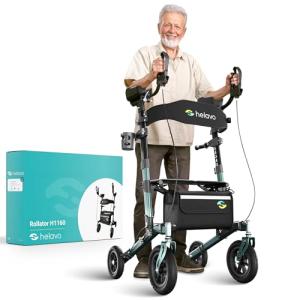Will Reliable Walker Never Rule The World?

The Reliable Walker: Choosing the Right Mobility Aid for Your Needs
In an ever-evolving world where mobility obstacles can occur for numerous reasons, a reliable walker can considerably boost a person's lifestyle. Individuals searching for independence in their movement find that a walker, typically referred to as a walking aid, plays a crucial role in their day-to-day activities, whether they are recuperating from surgical treatment, dealing with chronic pain, or experiencing age-related mobility issues.
In this blog site post, we will go over the significance of a reliable walker, the various types available, how to select the best one for your needs, and some often asked questions.
Comprehending Walkers
Walkers are mobility devices that aid people with walking problems. They provide stability and support, assisting to avoid falls and improving confidence when getting around.
Types of Walkers
There are a number of kinds of walkers offered, and comprehending the differences can assist you make an informed option. Below is a table summing up the main types of walkers.
| Kind of Walker | Description | Benefits | Drawbacks |
|---|---|---|---|
| Standard Walker | A basic walker without wheels, requiring users to raise it to move. | Offers maximum stability; simple design. | Can be cumbersome; less maneuverable. |
| Two-Wheeled Walker | Geared up with two wheels at the front for much easier movement. | Much easier to move; more lightweight. | Less stable than a standard walker. |
| Four-Wheeled Walker | A wheeled walker with four wheels, typically with a seat and hand brakes. | Highly maneuverable; ideal for outdoor use; stability with seating. | Needs some upper body strength to operate the brakes. |
| Rollator | A four-wheeled walker with a seat and storage area. | Ideal for longer ranges; comfortable seating alternative. | Less stability than standard walkers; can be more pricey. |
| Hemi Walker | Developed for those who can use only one hand or lower limb. | Beneficial for one-handed support; lightweight. | Might not offer as much support as conventional alternatives. |
Key Factors to Consider When Choosing a Walker
Picking the ideal walker is important for safety and self-reliance. Here are some key factors to consider:
1. User's Physical Condition
- Evaluate the user's balance, strength, and range of motion. Some users might need more support and stability, while others might choose something lighter and more mobile.
2. Intended Use
- Consider where the walker will primarily be used-- inside your home, outdoors, or both. Walkers developed for outdoor usage normally include larger wheels.
3. Weight Capacity
- Make sure that the walker can support the user's weight. Many walkers feature weight capability specs, typically ranging from 250 to 500 pounds.
4. Adjustability
- Look for a walker that can be changed in height to ensure correct posture and comfort while walking.
5. Additional Features
- Numerous walkers included features such as brakes, seats, baskets, and even built-in lights. Assess which features are necessary for the user's needs.
6. Aesthetics
- While performance is critical, many modern walkers are developed with aesthetic appeals in mind. Choose one that the user feels excellent about using.
The Benefits of a Reliable Walker
Utilizing a reliable walker has numerous benefits, including:
- Increased Independence: Users can move on their own without relying heavily on others for support.
- Boosted Confidence: A stable walker provides users the security they require to move easily, lowering the worry of falling.
- Improved Stability: Walkers significantly improve balance, specifically for those with mobility impairments.
- Enhanced Quality of Life: With improved mobility, users can engage more actively in social, recreational, and day-to-day activities.
Regularly Asked Questions (FAQ)
1. How do I know if I need a walker?
If you find walking to be tough, experience frequent falls, have recently had surgical treatment, or have chronic conditions impacting your mobility, it may be time to think about a walker.
2. Can I utilize a walker on outdoor surface areas?
Yes, however consider getting a four-wheeled walker or a rollator designed particularly for outdoor terrains, as they generally have bigger wheels for better maneuverability.
3. How can I adjust my walker for the best fit?
A lot of walkers have height-adjustable legs. Stand in your shoes, and with your arms relaxed at your sides, the top of the walker need to be at wrist level.
4. How do Rollator For Seniors maintain my walker?
Routinely inspect the walker for any loose screws or parts, ensure the wheels are moving smoothly, and tidy it occasionally to keep its condition.
5. How can I develop my self-confidence while utilizing a walker?
Start utilizing the walker in familiar and safe environments. Gradually increase the complexity of your environments as you end up being more comfortable.
In conclusion, a reliable walker is not simply a mobility aid; it's a means to greater independence, security, and improved lifestyle. Understanding the kinds of walkers offered and evaluating individual needs can assist people make notified options. Whether it's a basic walker or a modern rollator, the best equipment cultivates self-reliance and confidence in mobility.
If you or a liked one deals with mobility challenges, think about purchasing a walker that meets personal needs, boosts mobility, and eventually, enriches day-to-day living. With the ideal choice, users can reclaim control of their motion, fostering a more active and satisfying life.

